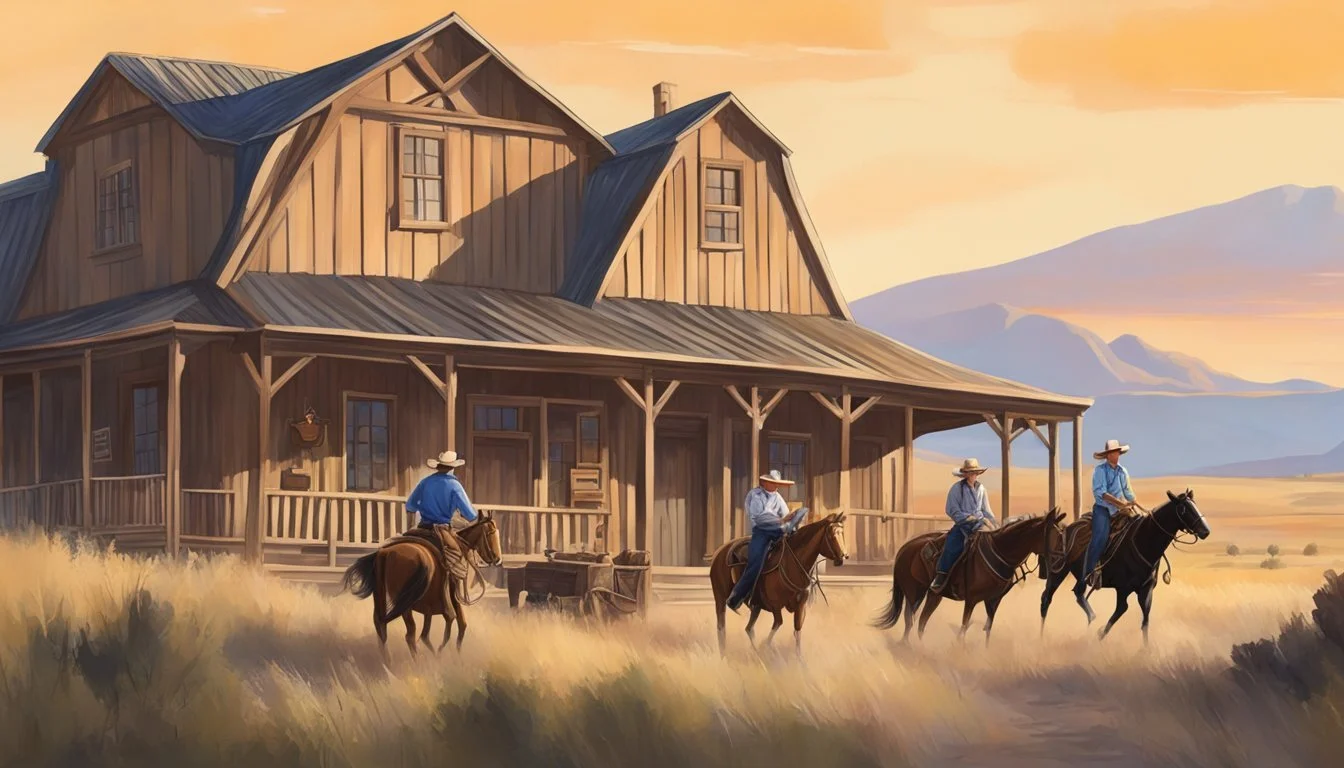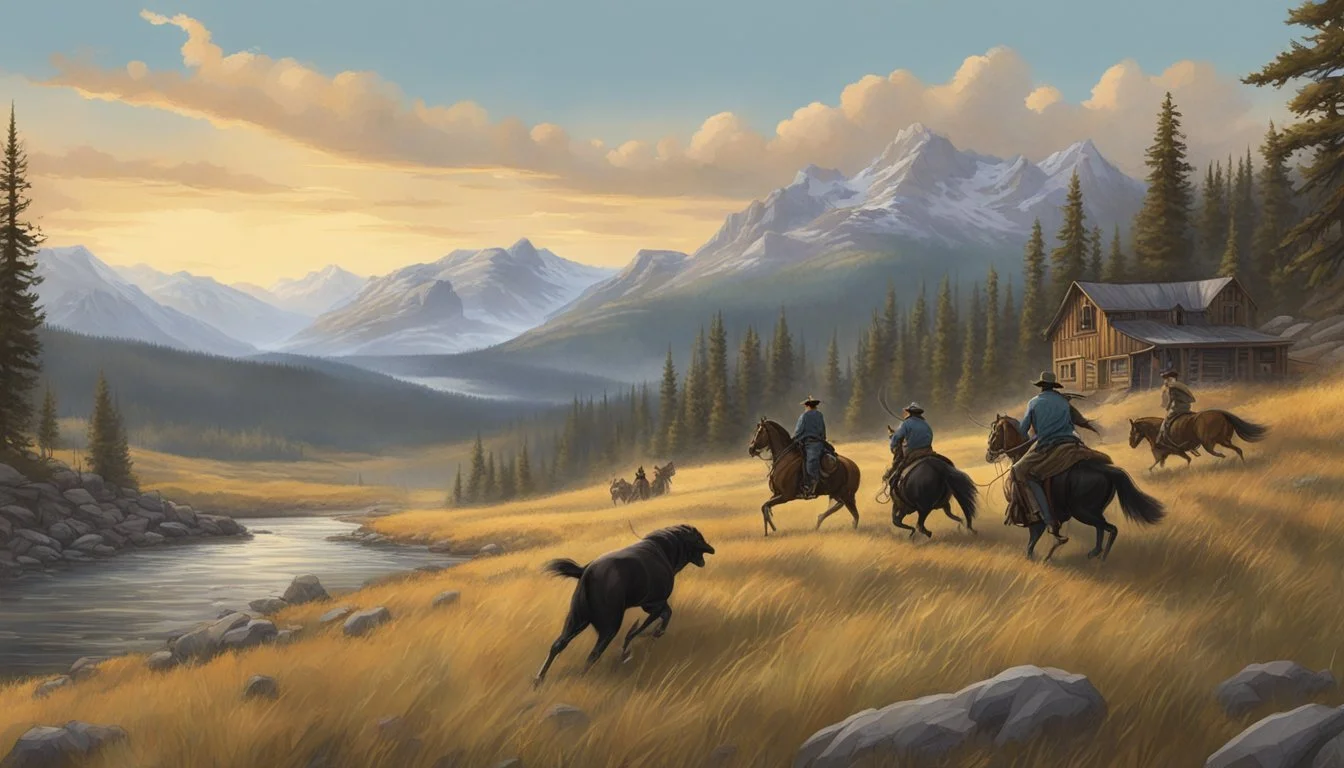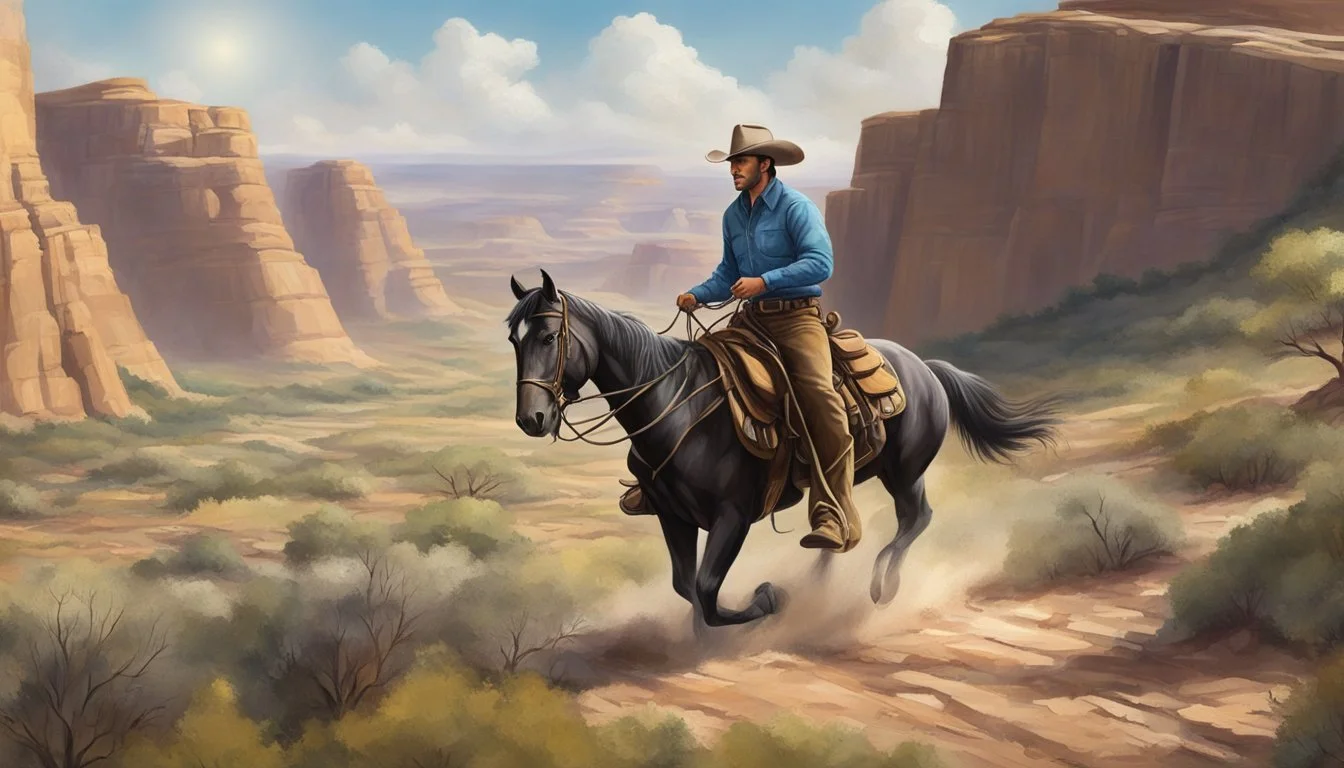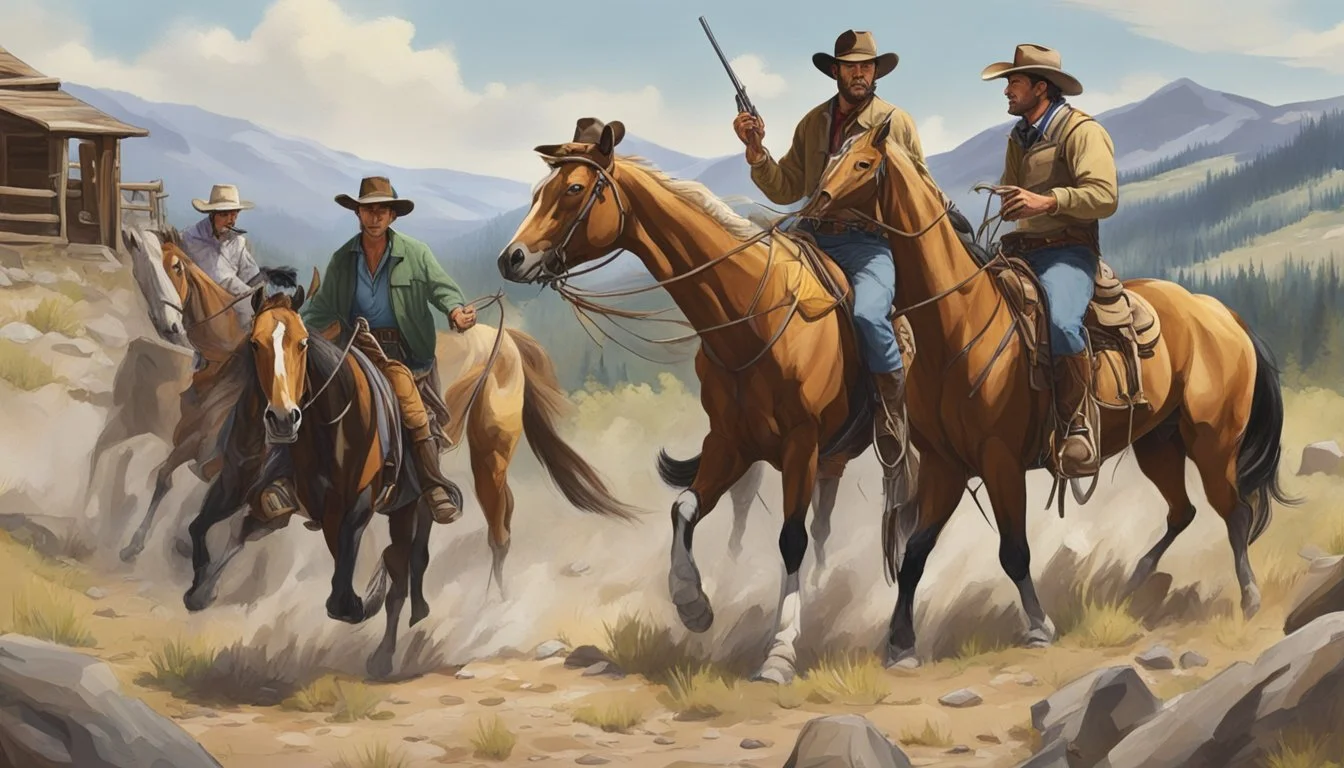Dutton Family's Ranch Faces Chaos as Yellowstone Turns Into Tourist Hotspot
Yellowstone, the hit TV series about the Dutton family's sprawling Montana cattle ranch, has captivated audiences with its dramatic portrayal of ranch life and power struggles. The show's influence extends beyond entertainment, sparking renewed interest in Western culture and ranch tourism.
A storyline featuring the Yellowstone Dutton Ranch becoming a popular tourist attraction could add an intriguing layer of complexity to the show's narrative. This hypothetical plot twist would force the Duttons to grapple with the challenges of balancing their traditional ranching lifestyle with the demands of a tourism-based economy.
Such a development could explore themes of modernization, cultural preservation, and the commercialization of the American West. It might also provide opportunities for conflict between the ranch's longstanding employees and new tourism staff, as well as debates about authenticity and the true meaning of ranch life in the 21st century.
Background on Yellowstone Series
Yellowstone is a popular American television drama series created by Taylor Sheridan. The show premiered in 2018 and quickly gained a dedicated following for its portrayal of modern ranch life in Montana.
Set against the backdrop of the American West, Yellowstone centers on the Dutton family, led by patriarch John Dutton III, played by Kevin Costner. The Duttons own and operate the largest contiguous ranch in the United States.
The series blends elements of family drama with the harsh realities of ranching in the 21st century. It explores themes of land preservation, political maneuvering, and the clash between traditional ways of life and modern development.
Yellowstone's depiction of cowboy culture and the struggles of maintaining a vast ranch resonates with many viewers. The show's stunning cinematography showcases Montana's rugged landscapes, adding to its visual appeal.
Key characters include:
John Dutton III (Kevin Costner): Ranch owner and family patriarch
Beth Dutton: John's fierce and loyal daughter
Kayce Dutton: John's son, torn between family obligations and his own path
Jamie Dutton: The adopted son with political ambitions
The series has spawned multiple spin-offs, expanding the Dutton family saga across different time periods in American history.
Development of the Dutton Ranch as a Tourist Destination
The Dutton Ranch transforms from a working cattle operation into a premier tourist destination, blending its rich history with modern amenities. This shift brings new economic opportunities and challenges for the Dutton family.
The Madison
The Madison River becomes a focal point for tourism development. Fly fishing enthusiasts flock to its pristine waters, drawn by the promise of world-class angling experiences.
The Duttons partner with local outfitters to offer guided fishing trips. These excursions combine outdoor adventure with insights into the ranch's history and conservation efforts.
Luxury riverside cabins are constructed, providing visitors with comfortable accommodations that blend seamlessly into the natural landscape. Each cabin features panoramic views of the Madison and surrounding mountains.
Stewardship and Vision
John Dutton reluctantly embraces tourism as a means to preserve the ranch's legacy. He implements strict environmental guidelines to protect the land's integrity while accommodating visitors.
The family develops educational programs focused on sustainable ranching practices. Guests participate in hands-on experiences, learning about cattle management, land conservation, and wildlife protection.
A state-of-the-art visitor center is built, showcasing the ranch's history through interactive exhibits. It serves as a hub for eco-tourism activities and highlights the Duttons' commitment to responsible land stewardship.
Native American Cultural Integration
Chief Thomas Rainwater and the Broken Rock Tribe play a crucial role in shaping the ranch's tourism offerings. Their involvement ensures respectful representation of indigenous culture and history.
The Duttons and the tribe collaborate to create authentic cultural experiences for visitors. These include guided tours of sacred sites, traditional craft workshops, and storytelling sessions led by tribal elders.
A portion of tourism revenue is allocated to support indigenous community initiatives. This partnership fosters economic opportunities for the Broken Rock Tribe while promoting cultural understanding among visitors.
Season 5 Highlights
Season 5 of Yellowstone brought major changes to the Dutton ranch, with tourism becoming a focal point amidst ongoing family conflicts. The shift in direction led to new challenges and intensified existing power struggles.
Introducing Tourism
The Dutton ranch opened its doors to visitors, transforming into a popular tourist attraction. This strategic move aimed to generate additional revenue and secure the ranch's future. Guided tours showcased the property's natural beauty and rich history. A visitor center was constructed, featuring exhibits on ranching life and local wildlife.
The tourism venture created jobs for locals but also raised concerns about preserving the ranch's authenticity. Beth Dutton spearheaded marketing efforts, while Rip oversaw the day-to-day operations of accommodating guests. Kayce played a crucial role in maintaining security and ensuring visitor safety.
Power Struggles and Family Dynamics
The introduction of tourism exacerbated tensions within the Dutton family. John Dutton initially resisted the idea, viewing it as a betrayal of the ranch's legacy. Beth and Jamie clashed over the financial management of the new venture. Their sibling rivalry intensified as they competed for control over the tourism operations.
Kayce found himself caught between family loyalty and his desire for a simpler life. The influx of visitors strained his relationship with Monica, who worried about the impact on their privacy. Episode 14 saw a heated confrontation between Beth and Jamie regarding the long-term vision for the ranch's future.
The season 5 finale, titled "Life Is a Promise," brought these conflicts to a head. A pivotal scene featured a tense family meeting where the Duttons were forced to confront the consequences of their choices.
Character Arcs and Development
The Yellowstone ranch's transformation into a popular tourist attraction catalyzes profound changes in the main characters. Their evolving roles and perspectives shape the unfolding drama as they adapt to this new reality.
Rip Wheeler's Transformation
Rip Wheeler, the loyal ranch foreman, faces a significant shift in his responsibilities. As tourists flood the property, he must balance maintaining the ranch's operations with ensuring visitor safety. This new dynamic challenges Rip's rugged, no-nonsense approach.
He develops unexpected people skills, learning to interact with guests while preserving the ranch's authenticity. Rip's journey involves reluctantly embracing change while staying true to his core values.
His relationship with Beth deepens as they navigate this new chapter together. Rip's growth is evident in his mentorship of Carter, teaching the boy to adapt to the ranch's evolving needs.
Beth Dutton's Influence
Beth Dutton leverages her business acumen to steer the ranch's transformation. She spearheads marketing strategies and negotiates deals to maximize the tourist venture's profitability.
Her fierce protectiveness of the family legacy clashes with the need for transparency in a public-facing business. This conflict forces Beth to confront her own vulnerabilities and past traumas.
As the ranch's public image becomes crucial, Beth grapples with softening her hard edges. Her relationship with Rip provides a stabilizing force, influencing her decisions and tempering her ruthless tendencies.
John Dutton's Legacy
John Dutton faces the daunting task of preserving his family's legacy while adapting to modern realities. The ranch's new direction challenges his traditional views and long-held principles.
He struggles to maintain control as the property becomes a public spectacle. John's journey involves learning to delegate and trust his children's vision for the ranch's future.
His relationship with each family member evolves as they take on new roles in the tourist-oriented business. John's character arc explores themes of adaptation, letting go, and redefining the meaning of legacy.
Jamie's Political Ambition
Jamie Dutton sees the ranch's newfound popularity as an opportunity to further his political career. He leverages the increased media attention to boost his public profile and influence.
His political aspirations often conflict with the family's need for privacy and control. Jamie navigates a delicate balance between loyalty to the Duttons and his personal ambitions.
This tension leads to complex negotiations and power plays within the family dynamic. Jamie's character development revolves around questions of identity, belonging, and the true meaning of family in the face of change and opportunity.
Impact on Indigenous Communities
The transformation of Yellowstone Ranch into a popular tourist attraction would significantly affect nearby Indigenous communities. This change would reshape land dynamics and create new economic possibilities for Native American groups.
Land Ownership and Control
The influx of tourists to Yellowstone Ranch would intensify debates over land rights and control. Chief Thomas Rainwater of the Broken Rock reservation might view this development as both an opportunity and a threat. The increased attention could amplify Native American claims to ancestral lands, potentially strengthening their position in ongoing land disputes.
Tourism could also put pressure on sacred sites and culturally significant areas. The Broken Rock tribe might need to negotiate with ranch owners and local authorities to protect these locations from overcrowding or inappropriate access.
Economic Opportunities
A thriving tourist industry at Yellowstone Ranch could create jobs and business prospects for members of the Broken Rock reservation. Native American-owned tour companies might offer cultural experiences, showcasing traditional practices and sharing Indigenous history with visitors.
Artisans from the reservation could find new markets for their crafts, potentially selling directly to tourists or through ranch gift shops. This economic boost might help fund community projects and support cultural preservation efforts.
However, the tribe would need to balance economic gains with maintaining cultural integrity. There could be concerns about commodifying Native American culture or presenting it in ways that align with tourist expectations rather than authentic traditions.
Legal and Economic Challenges
The Dutton ranch's transformation into a tourist attraction would bring complex legal and financial hurdles. New regulations and tax implications could threaten the family's control over their ancestral lands.
Market Equities' Involvement
Market Equities, a powerful corporate entity, might see the ranch's tourism potential as an opportunity for profit. They could offer to partner with the Duttons or attempt a hostile takeover. This scenario would likely involve complex legal battles and negotiations.
Jamie, as the family's attorney and Montana's Attorney General, would face conflicting interests. He'd need to balance his duty to the state with protecting his family's legacy.
The Duttons might consider selling parts of the land to fund the tourism venture. This decision would require careful legal scrutiny and could impact their property rights.
Inheritance Tax and Land Stewardship
The ranch's increased value as a tourist destination could lead to higher inheritance tax burdens. This might force the Duttons to consider selling portions of the land to cover these costs.
Land stewardship responsibilities would change with tourism. New zoning laws and environmental regulations could restrict the Duttons' use of their property.
The family might explore legal structures like trusts or conservation easements to protect their legacy and reduce tax liabilities. These options would require expert legal guidance to navigate effectively.
Ranch Operations and Culture
The Dutton Ranch's potential transformation into a tourist attraction would significantly impact its traditional operations and cowboy culture. This shift would require balancing authentic ranch experiences with visitor expectations.
The Role of Cowboys
Cowboys like Rip, Teeter, Ryan, and Lloyd would take on new responsibilities beyond cattle management. They might lead trail rides, demonstrate roping skills, or conduct ranch tours for guests. Their expertise in horsemanship and cattle handling would become a showcase for visitors.
Ranch hands would need to adapt their daily routines to accommodate tourists. This could include scheduled demonstrations of branding, herding, and other ranching tasks. Cowboys might also share stories of ranch life, educating visitors on the realities of modern cattle operations.
The ranch's experienced hands, such as Rip and Lloyd, would likely play crucial roles in maintaining authenticity. Their deep knowledge of ranch traditions would be invaluable in creating immersive experiences for tourists.
Everyday Life on the Ranch
Daily ranch operations would require careful planning to balance tourist activities with essential work. Mornings might start with cattle checks and feeding, followed by guest interactions later in the day.
Ranch hands would need to juggle their regular duties with new tourist-oriented tasks. This could include:
Maintaining guest areas
Ensuring animal safety during visitor interactions
Conducting educational sessions on ranching practices
Meal times could become opportunities for guests to experience cowboy cuisine. The bunkhouse might be partially converted into a museum, showcasing ranch history and cowboy culture.
Special events like cattle drives or rodeos could be scheduled to give visitors a taste of authentic ranch life. These activities would highlight the skills of cowboys like Teeter and Ryan, while providing exciting experiences for tourists.
Series Legacy and Future Prospects
Yellowstone has left an indelible mark on television, inspiring spin-offs and shaping pop culture. Its influence extends beyond the screen, sparking renewed interest in the American West and ranch life.
Yellowstone's Cultural Influence
Yellowstone captured audiences with its portrayal of the modern American West. The series revitalized interest in cowboy culture and ranch life. It sparked tourism to Montana and Wyoming, with fans eager to experience the landscapes featured in the show. The Dutton family's struggles resonated with viewers, exploring themes of family, legacy, and land preservation. Yellowstone's fashion choices influenced Western wear trends, with retailers reporting increased demand for cowboy hats and boots. The show's success also led to a resurgence in Western-themed content across various media platforms.
Potential for Spin-Offs and Continuations
The Yellowstone universe has expanded through successful spin-offs. Prequels 1883 and 1923 explore the Dutton family's history, providing depth to the franchise. A new series focusing on the Four Sixes Ranch, known as 6666, is in development. This spin-off will delve into the operations of the real-life Texas ranch featured in Yellowstone. The franchise's future remains bright, with potential for more character-driven spin-offs. Fans speculate about series following popular characters like Beth Dutton or Rip Wheeler. The Yellowstone Season 5 finale sets the stage for further storylines, leaving room for continuation or new directions within the established universe.









